This is the third in a three part series of Conversations with Yuri Artsutanov. Part I can be found here and Part II can be found here.
What Yuri Artsutanov told us about himself
Conversations with Yuri Artsutanov by phone, March 2010
Q. When and where were you born?
A.I was born on the 5th of October, 1929 in Leningrad, on the Moika river, in the building which once belonged to the Governor-General of St Petersburg in the XVIIIth century, during the time when either Casanova or Cagliostro visited the city.
Q.Who were your parents?
A. My mother was a teacher of history and worked in both standard and technical schools. My father was also a teacher of history but taught in special schools for workers which were organized after the revolution to educate the working classes. They met at the “A. Herzen Education Institute” where they studied together.
My maternal great-grandfather, my mother’s grandfather, was Ivan Vassil’evich Vassil’ev (after whom a street in old St Petersburg was named, now called Degtyaryov’s street). He was the son of a serf who came to St Petersburg from Tver province to sell canvases. Artists recognized his talent and began to teach him their trade. He became an artist and produced many paintings. Later he even became an Honorary Citizen, the title passed on to the next generations as Hereditary Honorary Citizen and my mother had this title as well. He opened a lane on the Okhta (a district in St Petersburg on the other side of the Big Neva River) near the Okhta cemetery. This lane grew and was renamed Vassil’ev street as I mentioned before.
In 1935, when I was 5 years old my father was arrested in connection with Trotsky’s trial and he was exiled to Kazakhstan. During the first couple of summers he came illegally from there to the dacha we rented near Leningrad. In 1937 he was finally sentenced to five years as ‘an enemy of the people’, and taken to a concentration camp in Magadan, on the Kolyma.
After that he was stripped of his civic rights for a further15 years, exactly like Ivan Denisovich, the hero in Solzhenitsyn famous novel. After five years, in 1942 he was released but denied the right to live in a big city. He lived in a village called Nexican, in Magadan district until 1957. After Stalin’s death and with Khrushchev in power he was rehabilitated. Then he moved to Krasnoyarsk where he lived until his death in 1973. I have a document confirming that I’m the son of the victim of unlawful repression and as such I receive an additional pension – 300 roubles (about $10!) a month.
My mother died in 1998. I had a brother who died 5 years ago. He was a graduate of the Air Force Academy as a meteorologist. After his death his wife appropriated my flat by deceit and left me to live in a tiny flat where I can’t order all my belongings properly. I think my original flat should become a museum just like the Tsiolkovsky museum.
Q. Where were you educated? What do you remember about your school?
A. I was educated in school No.14 (which later became No.78) on the Petrogradskaya Side. That was before the war and it was a standard school and my class was a standard one as well. There were some boys who were friends interested in science and we discussed all sorts of unusual scientific problems. I finished year 7 only.
Q. What you remember about the war?
A. The war started in June 1941 but only in March of 1942 were my mother, brother and I able to escape the blockaded city across the frozen Lake Ladoga along the so called “Road of Life”. We were lucky to survive as the truck in front of us sank under the ice. We spent the rest of the war in the Urals – in the village of Beloyarka in what was Chelyabinsk province at that time but later became Kurgan province. There was a very nice river in Beloyarka and the village itself has some connection to Tsar Boris Godunov.
Q. Where did you study and work after the war?
A. We returned to Leningrad in July 1945. After 7th grade at the standard school I began studies at the technical school from 1945 to 1949 and in that year I entered the “Lensoviet Leningrad Institute of Chemical Technology”. After graduation in 1954 I was sent to The Research Institute for the Chemistry of Mineral Oil (I stayed there for 3 years) and worked on polymers. In 1957 I entered the special course at the same Chemical Institute. I studied to do my PhD in the faculty of colloid chemistry.
Unfortunately I didn’t complete my PhD. I wrote my thesis but didn’t submit it because I became very sceptical of the details of “ Kremnyov’s Method ” ( he was the head of the Faculty) when I found them to be incorrect – this way of doing things made it possibile of achieve any results you wished.Q. Was it at that time that the idea of a lift into space came to you? How?
A. Yes, my idea for a lift into space took shape at that time. I was always interested in space and my friend Alik Yezrielev’s father, as a Stalin Prize winner had access to foreign scientific and technical journals (that was in 1957, four years after Stalin’s death) and we could also read them. On one occasion we read about a newly developed extremely strong polymer, so strong that if you used it to make a rope 400km in length it would not break under its own weight. At an altitude of 400km the force of gravity is already less than on earth so the rope could be lengthened up to 1km ( according to my calculations) without it breaking. The question arose what thickness would a rope of infinite length require. It turned out to be impossible if it was of a constant diameter. However, such a rope could be possible if it had a variable cross section, that is, was spindle shaped and if it was possible to use centrifugal force to counter the force of gravity. Step by step the idea of a lift into space was born. I kept talking to people about the idea but didn’t submit my article to the Soviet newspaper “Komsomolskaya Pravda” until 1960 and a week later they published it.Q. Where does your ability to have ideas on so many different areas come from? Is it innate or did you develop the skills yourself or were they the result of your studies and work?
A. It is difficult for me to answer that question. As a child I read popular science books in the series “ Entertaining Physics”,”Chemistry”,”Mathematics”, “Astronomy”,”Mechanics” and so on, all by the same author Perlman. Perhaps both my interest and my ability came from there.Q. If you were interested in such books and you read them it suggests you already had an interest in these things. The ability to think, to analyse, to develop new ideas could develop from your reading because all those books were about ideas and how to put them into practice.
A. I was always solving difficult problems. For example in 4th Grade I solved all the problems in our Arithmetic text book.
Q. Was your Arithmetic teacher special?
A. No, he was an average teacher.
Q. Do you recall any outstanding teacher at your school?
A. Yes. In Grade 7 there was a teacher of Physics – Guchkov who made a big impression on me. He gave me a physics textbook to read which he had used at University.
Q. Did you understand it all?
A. Of course! (he laughs)
Q. What are your own best qualities?
A. Love for knowledge otherwise known as ‘inquisitiveness’. I love to solve difficult problems. Yes, I’ve always tried to solve difficult problems wherever I’ve been.
Q. Did you join the Komsomol (Young communists) organization?
A. Of course I did. It was compulsory! As soon as I was 14 years old I became a member at once.
Q. What happened when you graduated from the Technological Institute? Did you let your membership lapse?
A. When I started my studies at the technical school I was asked whether I was a member of Komsomol and I said “yes”. When I started to work in the Research Institute for the Chemistry of Mineral Oil I was asked if I was a member of the Communist Party. I said ”no”. Of Komsomol? I said “yes”. When I completed the course work for my PhD in 1960 I left Komsomol because of my age. They kept asking me to become a member of the Communist Party but I avoided it at all costs. I was afraid to tell them that I didn’t want to! (Laughs).
From 1960 to 1964 I remained in the faculty of Colloid chemistry and worked in the laboratory. for four years.
In 1965 my friend Alik Yezrielev persuaded me to join the Institute of Synthetic Rubber (VNIISC) because at the Chemistry for Mineral Oil Institute I had been working with latexes. It was here I first met some young dissidents.
Q. Did the fact your father was arrested affect your career, if so how?
A. Yes, it affected me before his rehabilitation in 1956. Before then I was expelled from the special faculty of Atomic Energy in the Technological Institute where I studied. It was actually contrary to their own popular slogan “Children are not responsible for the deeds of their fathers”! (laughs). I always had the best marks in all subjects. I was awarded a special allowance as part of my scholarship (but they didn’t give me a Stalin scholarship!) Everyone around me kept telling me I was the best student in the Institute etc. Despite this I was expelled form the Atomic Energy faculty.
Q. How did you get into the Faculty of Atomic Energy in the first place?
A. I had a “red”diploma (an outstanding diploma with Honors) from the technical school where I had studied so they enrolled me there but by doing so they kept me from any of the other, better faculties. (The faculty of Atomic Energy was “closed” with increased security and secrecy so you needed to have an absolutely (politically)clean biography. From that point of view I was not “trustworthy” because my father was a political prisoner. Political considerations were more important than my qualifications in 1949. My father wasn’t rehabilitated until 1956.
Q. Were you interested in atomic energy?
A. No, but they offered other subjects in the faculty: all the nuclear processes, all the chemical processes connected with nuclear technology etc. i.e. it gave a very broad knowledge around the behaviour of atoms.
Q. How did you become an “Enemy of People”?
A. It was much later, in 1965 and I didn’t become one directly as such. There was a group of nine students who decided to organize a communist revolution. They were all arrested and imprisoned. Those who read their pamphlets and the book called “From Bureaucracy to Dictatorship of the Proletariat” and who hadn’t informed the “organs” (of the KGB) about such anti-Soviet activities were expelled. ‘Why didn’t you denounce them?’ ‘Why didn’t you come to tell us?’ ‘If you hadn’t forgotten our special department (Department No.1) at your place of work or study and if you had have come to us more often everything could be different’. So, I was dismissed from the Institute of Synthetic Rubber. I had worked there for only a year and a half.
Q. How did that affect your life?
A. It continued to affect me in one way or another. Wherever I worked I was either paid less than before or didn’t receive any wages for some months. And if they wanted to dismiss me I was told to write an application that I wanted to terminate my work “of my own free will”. Or else I was told, “Yes, we’ll appoint you” but three days later I was rejected.
That was the case in five or six work places. Finally I found a position at the VNIIASH (Institute for Abrasives and Grinding Materials) where people from the 1st Department of my previous place of employment had called asking them to take me (the Institute had a low security profile). That was in 1966. Actually it only happened after I had gone to the headquarters of the KGB in Leningrad (the so called “Big House” on the Liteinyi Prospect) and told them that I hadn’t known that I had to inform them about the dissidents. I hadn’t known I had to denounce them! I worked from 1966 to 1992 at VNIIASH. In between I worked for four years at the “Ilych” in an experimental research plant.
Q. Your future wife worked at VNIIASH?
A. Yes, she had graduated from the Electrotechnical Institute in Leningrad.
Q. How did you survive financially before you started to work at VNIIASH?
A. My mother and my aunt helped me with money but personally I wasn’t stressed because I felt it wasn’t my fault that I didn’t have a job.
Q. Why didn’t you emigrate when it became possible? You told me in 1979 when I emigrated that you couldn’t bear leaving the Russian landscape.
A. No, I was joking! I never considered emigrating seriously because I couldn’t bear to cut my connections with hundreds of my friends and acquaintances.
Q. Are you a member of some scientific organization, club, or association?
A. I was a member of a society where people delivered scientific lectures and I did the same: the Society for the Dissemination of Scientific Knowledge Unfortunately I haven’t heard about the society for a long time. I also gave lectures at the Historical Museum of the Peter and Paul Fortress.
Q. When did you retire from VNIIASH?
A. In 1992. I didn’t retire, they made me go on the pension. The Deputy Director of Science, M. Efros, told me I was too individualistic. If I had have included all the “essential people” (i.e. himself) as co-authors on the applications of my inventions I could have worked much longer!
Copyright 2010.:Yuri Artsutanov, Natalie Sherman, Eugene Schlusser
This conversation, as the previous two, are copyrighted and cannot be reproduced in any form without the express, written consent of Eugene Schlusser (eugenesc [at] netspace.net.au).
I find the whole interaction with the KGB and the Russian state beaurocracy to be fascinating. To not be allowed to do the work of your choice because they had a political problem with your father is just so bizarre…
Yuri Arsutanov and Jerome Pearson will both be at the upcoming Space Elevator Conference and it’s still not too late to sign up! Come out, learn more about this magnificent idea, and meet the two people largely responsible for the modern day concept of the Space Elevator!
The Space Elevator Blog wishes to thank Mr.’s Schlusser and Artsutanov for their permission to publish these conversations. It’s truly been an honor.
 First up is Dr. Pugno of the Laboratory of Bio-inspired Nanomechanics at the polytechnic Institute of Torino, Italy. Dr. Pugno originally came tot he notice of the Space Elevator community when he began to discuss defects and other potential problems with making a tether suitable for a Space Elevator. I remember Brad Edwards being somewhat dismissive of Dr. Pugno’s work, but I think time has proven him correct. Dr. Pugno has been turning his attention to making these cables as strong as possible and today’s talk was on the same theme. He drew parallels to the organic world; if bones, for instance, can heal themselves, why can’t CNTs? If some sort of self-healing capability could be introduced into a cable, then it could become more robust. This was a very interesting presentation and I think there is a real future in this work. The SE community had always postulated repairing the tether, but from macro-size breaks (introduced by space debris, etc.). Dr. Pugno brings this down to the atomic level and his idea may turn out to be vital. He still believes that the maximum strength possible for a cable is 38 GPa…
First up is Dr. Pugno of the Laboratory of Bio-inspired Nanomechanics at the polytechnic Institute of Torino, Italy. Dr. Pugno originally came tot he notice of the Space Elevator community when he began to discuss defects and other potential problems with making a tether suitable for a Space Elevator. I remember Brad Edwards being somewhat dismissive of Dr. Pugno’s work, but I think time has proven him correct. Dr. Pugno has been turning his attention to making these cables as strong as possible and today’s talk was on the same theme. He drew parallels to the organic world; if bones, for instance, can heal themselves, why can’t CNTs? If some sort of self-healing capability could be introduced into a cable, then it could become more robust. This was a very interesting presentation and I think there is a real future in this work. The SE community had always postulated repairing the tether, but from macro-size breaks (introduced by space debris, etc.). Dr. Pugno brings this down to the atomic level and his idea may turn out to be vital. He still believes that the maximum strength possible for a cable is 38 GPa…



 And we’re off. Markus Klettner, Executive Director of EuroSpaceward, is giving the kickoff address. He is talking about why we are having this conference. His rationale is to help humanity become a
And we’re off. Markus Klettner, Executive Director of EuroSpaceward, is giving the kickoff address. He is talking about why we are having this conference. His rationale is to help humanity become a 
 One of the things which I should be able to accomplish at the upcoming
One of the things which I should be able to accomplish at the upcoming 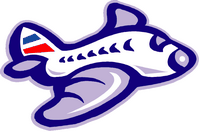 The final set of abstracts for the presentations have been released and you can view them here (
The final set of abstracts for the presentations have been released and you can view them here ( On December 11th and 12th, the
On December 11th and 12th, the 

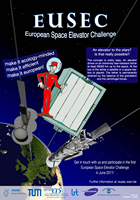

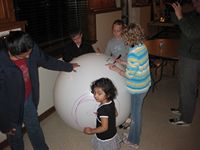
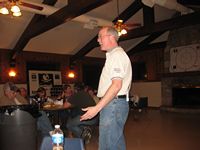
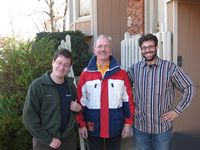
 The day after the recent Space Elevator Conference in Redmond, Washington, I needed to drive Yuri Artsutanov and his translator (Eugene Schlusser) back to the Sea-Tac airport so that they could catch their flight. On the way, we stopped at the LaserMotive facility so that a) the LaserMotive people and Yuri could meet and b) we could see what was happening with them.
The day after the recent Space Elevator Conference in Redmond, Washington, I needed to drive Yuri Artsutanov and his translator (Eugene Schlusser) back to the Sea-Tac airport so that they could catch their flight. On the way, we stopped at the LaserMotive facility so that a) the LaserMotive people and Yuri could meet and b) we could see what was happening with them.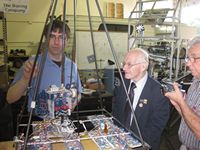



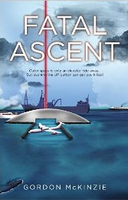 There is a new book out which has a Space Elevator as a central theme. The title is Fatal Ascent and the author is Mr. Gordon McKinzie. I’ve just recently learned that Gordon was supposed to be at the recent Space Elevator Conference in Redmond, but a sudden and severe medical issue prevented him from attending. He does live in the area and so we can hope to see Gordon at the next Conference.
There is a new book out which has a Space Elevator as a central theme. The title is Fatal Ascent and the author is Mr. Gordon McKinzie. I’ve just recently learned that Gordon was supposed to be at the recent Space Elevator Conference in Redmond, but a sudden and severe medical issue prevented him from attending. He does live in the area and so we can hope to see Gordon at the next Conference.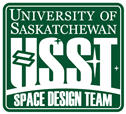 On the
On the  Well, At some point you have to give up and move on. The ideal point for this passed some time ago. Perhaps years ago. 😉
Well, At some point you have to give up and move on. The ideal point for this passed some time ago. Perhaps years ago. 😉 The window is now officially open for articles for the very first ISEC Journal.
The window is now officially open for articles for the very first ISEC Journal. Dr. Bryan Laubscher, Physicist, long-time Space Elevator enthusiast and the principle behind Odysseus Technologies, a start-up carbon nanotube spinning company, will appear on Dr. David Livingston’s
Dr. Bryan Laubscher, Physicist, long-time Space Elevator enthusiast and the principle behind Odysseus Technologies, a start-up carbon nanotube spinning company, will appear on Dr. David Livingston’s 

 The local (Seattle, Washington) NBC affiliate is KING-TV. They sent a crew to film Yuri and Jerome’s arrival at Sea-Tac on Thursday and another crew to film events, including the Strong Tether Challenge, at yesterday’s first day of the
The local (Seattle, Washington) NBC affiliate is KING-TV. They sent a crew to film Yuri and Jerome’s arrival at Sea-Tac on Thursday and another crew to film events, including the Strong Tether Challenge, at yesterday’s first day of the 






 The
The  The Strong Tether challenge, part of the Space Elevator Games, is just three days away! It will be held at the upcoming
The Strong Tether challenge, part of the Space Elevator Games, is just three days away! It will be held at the upcoming  Michael Laine of LiftPort fame has a new project; trying to convince people that building a Lunar Space Elevator is a good idea and doable with today’s technology and materials.
Michael Laine of LiftPort fame has a new project; trying to convince people that building a Lunar Space Elevator is a good idea and doable with today’s technology and materials. The news that both Yuri Artsutanov and Jerome Pearson will be attending the upcoming
The news that both Yuri Artsutanov and Jerome Pearson will be attending the upcoming 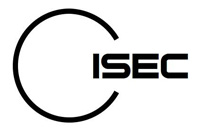 One of the many ISEC projects we’ve been working on this year is coming up with an “official position paper” on the subject of this year’s theme; Space Elevator Survivability – Space Debris Mitigation.
One of the many ISEC projects we’ve been working on this year is coming up with an “official position paper” on the subject of this year’s theme; Space Elevator Survivability – Space Debris Mitigation. I’ve written about the
I’ve written about the  Many moons ago (Dec 28, 2007), Stan Taylor of the
Many moons ago (Dec 28, 2007), Stan Taylor of the